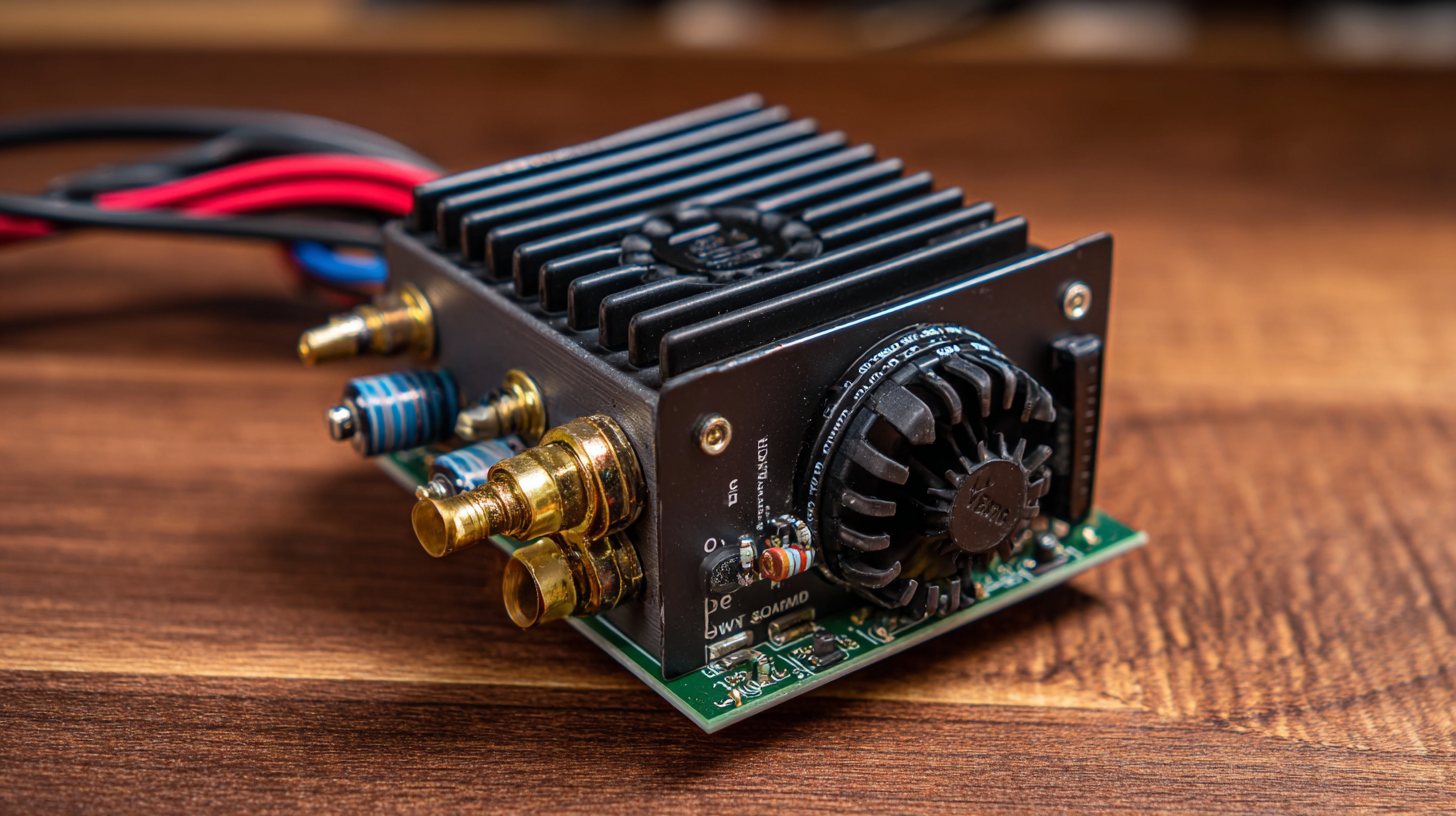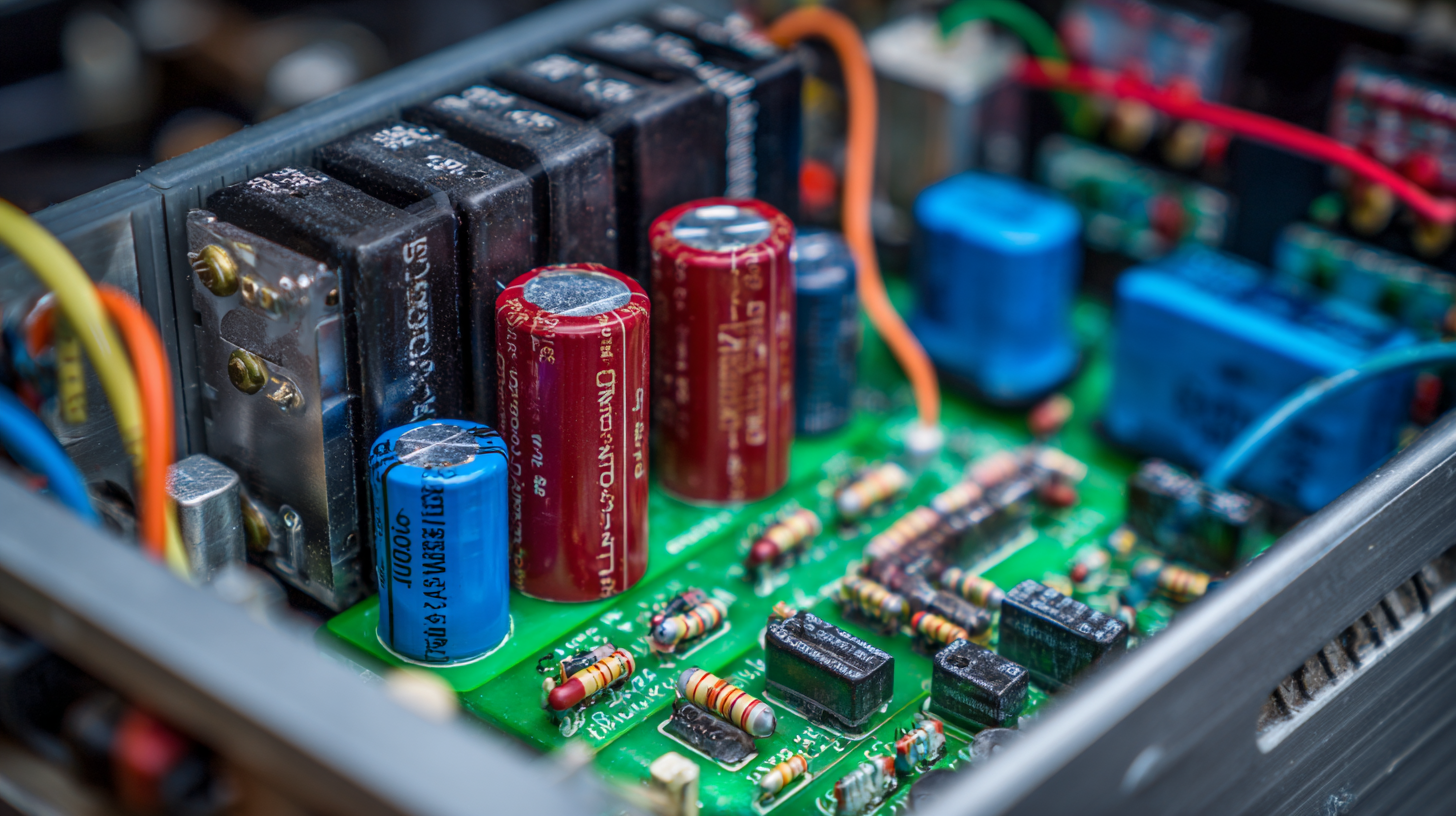How to Choose the Right DC to AC Converter for Your Power Needs
 In today's rapidly evolving energy landscape, selecting the right DC to AC converter is crucial for optimizing power efficiency and meeting diverse energy demands. According to a report by MarketsandMarkets, the global power inverter market is projected to reach $20.3 billion by 2026, with a significant portion attributed to the rising demand for renewable energy sources and off-grid applications. With numerous models available, it's essential to consider factors such as voltage requirements, efficiency ratings, and load capacity when choosing a converter. As more consumers and industries switch to renewable energy systems, understanding the importance of the DC to AC converter in ensuring stable and reliable power supply can make a significant difference in performance and cost-effectiveness.
In today's rapidly evolving energy landscape, selecting the right DC to AC converter is crucial for optimizing power efficiency and meeting diverse energy demands. According to a report by MarketsandMarkets, the global power inverter market is projected to reach $20.3 billion by 2026, with a significant portion attributed to the rising demand for renewable energy sources and off-grid applications. With numerous models available, it's essential to consider factors such as voltage requirements, efficiency ratings, and load capacity when choosing a converter. As more consumers and industries switch to renewable energy systems, understanding the importance of the DC to AC converter in ensuring stable and reliable power supply can make a significant difference in performance and cost-effectiveness.
Understanding Your Power Requirements for DC to AC Conversion
When selecting a DC to AC converter, understanding your power requirements is crucial. According to the Global Market Insights report, the DC-AC inverter market is projected to surpass $10 billion by 2026, highlighting the increasing demand for efficient power conversion solutions. To make an informed decision, start by assessing the total wattage of your devices. It’s essential to account for peak power demands, which are often higher than the continuous power requirements. For instance, appliances like refrigerators and power tools may have a surge wattage that is 2-3 times their running wattage.

Another key factor is the type of inverter. Pure sine wave inverters are ideal for sensitive electronics, as they provide a clean, stable output that closely resembles grid power, whereas modified sine wave inverters can suffice for simpler appliances. A report by Research and Markets emphasizes that the growth of renewable energy sources is driving demand for inverters capable of supporting solar and wind systems, particularly in off-grid applications. Ultimately, ensuring that your chosen inverter matches your energy requirements will lead to improved efficiency and reliability of your power systems.
Key Features to Consider When Selecting a DC to AC Converter
When selecting a DC to AC converter, several key features should be carefully evaluated to meet your specific power needs. One of the most crucial aspects is the converter's output power rating, typically measured in watts. According to a report by MarketsandMarkets, the global power inverter market is projected to reach $12.4 billion by 2026, driven by increasing demand for inverters in renewable energy applications. Understanding your total wattage requirement, including peak and continuous power needs, helps ensure that the selected converter can handle your load without overheating or failing.
Another important feature to consider is the inverter's efficiency rating. Efficiency directly impacts energy consumption and operating costs. The latest industry data indicates that high-quality inverters can achieve efficiency ratings of up to 95%. Selecting a converter with a higher efficiency not only reduces waste but also maximizes the performance of your power system. Additionally, consider features such as waveform output quality; pure sine wave inverters are preferred for sensitive electronic devices, as they provide a smoother power supply compared to modified sine wave inverters. Therefore, assessing these key features will guide you in choosing the most suitable DC to AC converter for your particular applications.
How to Choose the Right DC to AC Converter for Your Power Needs - Key Features to Consider When Selecting a DC to AC Converter
| Feature | Description | Important Considerations |
|---|---|---|
| Power Rating | The maximum power output the converter can handle, measured in watts (W). | Ensure it meets or exceeds the total wattage of the connected devices. |
| Input Voltage Range | The range of DC input voltages the converter can accept. | Verify compatibility with your DC power source. |
| Output Waveform | The type of AC waveform produced (pure sine, modified sine, or square wave). | Choose pure sine for sensitive electronics, modified sine for general use. |
| Efficiency | The ratio of output power to input power, expressed as a percentage. | Higher efficiency reduces energy loss and heat generation. |
| Size and Weight | The physical dimensions and weight of the converter. | Consider portability and installation space requirements. |
| Cooling Mechanism | Method used to dissipate heat (fan-cooled, passive heatsink, etc.). | Adequate cooling is essential for performance and longevity. |
| Safety Features | Include over-voltage, over-current, and thermal protection. | Look for built-in protections to prevent equipment damage. |
| Certifications | Industry standards and compliance certificates (CE, UL, etc.). | Select products that meet relevant safety and performance standards. |
Assessing Compatibility with Your Devices and Systems
When selecting a DC to AC converter, assessing compatibility with your devices and systems is crucial. Different devices have varying power requirements, and a mismatch could lead to inefficiencies or equipment damage. According to a recent industry report from ResearchAndMarkets, over 30% of electronic device failures are attributed to improper power supply choices. Therefore, always check the voltage and current ratings of your devices against the specifications of the inverter to ensure seamless operation.
Tip: Before purchasing a converter, list the wattage requirements of your devices. This will help you choose a converter with adequate capacity. Additionally, consider factors like surge power and continuous power ratings, as they can impact the performance of sensitive electronics.
When selecting a DC to AC converter, also consider the technology used, such as pure sine wave versus modified sine wave. Pure sine wave inverters are essential for high-end electronics, which often require clean and stable power to function correctly. A study by Technavio states that the demand for pure sine wave inverters is expected to grow by 12% annually, highlighting the importance of making an informed choice that aligns with both current and future power needs.
Tip: If your devices include sensitive equipment like laptops or sound systems, invest in a pure sine wave inverter to ensure optimal performance and longevity.
Power Needs Assessment: DC to AC Converter Compatibility
Evaluating Efficiency Ratings and Performance Standards
 When selecting a DC to AC converter, evaluating efficiency ratings and performance standards is critical. Efficiency refers to the percentage of input power that is converted to output power. According to the U.S. Department of Energy, modern converters can achieve efficiencies upwards of 90%. Higher efficiency not only reduces energy consumption but also minimizes heat generation, extending the lifespan of the device.
Choosing a converter with an efficiency rating above 90% can significantly impact your energy costs, particularly in applications requiring continuous power conversion.
When selecting a DC to AC converter, evaluating efficiency ratings and performance standards is critical. Efficiency refers to the percentage of input power that is converted to output power. According to the U.S. Department of Energy, modern converters can achieve efficiencies upwards of 90%. Higher efficiency not only reduces energy consumption but also minimizes heat generation, extending the lifespan of the device.
Choosing a converter with an efficiency rating above 90% can significantly impact your energy costs, particularly in applications requiring continuous power conversion.
Performance standards such as the IEC 62040-3 define categories for uninterruptible power supplies and associated converters, helping users to understand their capabilities. Converters that meet these performance standards are subjected to rigorous testing, ensuring reliability and enhanced safety. For example, devices classified under the highest categories (e.g., VFI-SS-111) are designed for demanding applications, providing a stable power supply even under variable load conditions. By considering both efficiency ratings and compliance with established performance standards, users can make informed decisions tailored to their unique power needs.
Budgeting and Cost Considerations for Your Converter Choice
When selecting a DC to AC converter, it's essential to consider your budget and the overall cost-effectiveness of your choice. The price of converters varies significantly based on their capacity, efficiency, and features. It's advisable to set a clear budget before you start shopping to narrow down your options effectively. Remember that while cheaper models may seem attractive, investing in a reliable and efficient converter can save you money in the long run through reduced energy costs and improved performance.
Tip: Research the long-term savings associated with higher-quality converters. Often, models that are slightly more expensive upfront come with better warranties and efficiency ratings, leading to lower operational costs.
Additionally, it's important to factor in any installation costs and additional accessories you might need. Sometimes, a converter that seems affordable at first glance may require costly installation services or additional components to function optimally.
Tip: Always compare several models and check for customer reviews regarding both performance and hidden costs, such as maintenance and energy consumption, to ensure you are making a wise investment.
Related Posts
-

5 Essential Tips to Optimize Your UPS Electrical Systems for Maximum Efficiency
-

7 Reasons Why AC to DC Inverters Are Essential for Your Business Efficiency
-

Innovative Solutions for AC to DC Inverter Applications
-

5 Proven Reasons High Voltage DC DC Converters Are Essential for Modern Power Systems
-

Ultimate Guide to Selecting the Best UPS Power Supply for Your Business
-

How to Select the Best Buck Converter for Efficient Power Management in Your Application
At Premium PSU, we are specialists in designing and manufacturing power conversion systems for the industrial market. Our product range includes high reliability power supplies from 50W to 72kW.
PREMIUM PSU
C/ Dolors Aleu, 19-21, 2nd Floor
08908 – Hospitalet de Llobregat
Barcelona-SPAIN
t.+34 93 223 26 85


